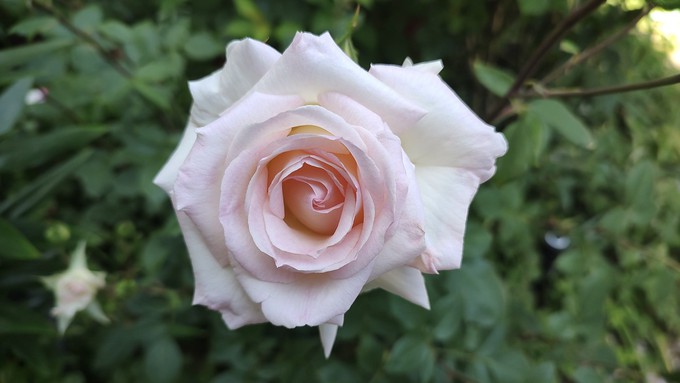
Plenty of compact varieties available to highest bidders

The miniflora rose Leading Lady is one of the roses to be auctioned Thursday. Debbie Arrington
Who doesn’t need more roses? Especially when those roses will fit into small spaces in your garden – or thrive while growing in containers.
With an eye for little favorites, the Sacramento Rose Society hosts its annual auction at 7 p.m. Thursday, May 9, at Shepard Garden and Arts Center in McKinley Park. The auction is open to the public. Admission and parking are free.
The club has come up with a stellar selection of must-have rose varieties – mostly miniatures, mini-floras and polyanthas. These varieties tend to stay small (often under 2 feet) and can be grown in pots. (Suddenly, you can envision a lot more space for roses!)
Maybe you saw some of these varieties at Sacramento’s recent rose show? Or admired their flowers in bouquets? The list of varieties includes the minifloras Leading Lady, Butter Cream, Gold Country and Nancy Jean as well as the popular miniatures Bees Knees, Gourmet Popcorn, Old Glory and Kings Mountain.
Debbie Arrington, co-creator of Sacramento Digs Gardening, will serve as auctioneer. For an auction catalog, email debarrington17@gmail.com.
The 44 bushes to be offered were grown by the club’s green-thumbed propagators, mostly from cuttings supplied by renown rose expert Baldo Villegas and pulled from his vast 3,000-plant collection. Several of these varieties cannot be found in nurseries. At the homes of club members, these bushes have been babied for many months if not years. The results: Healthy plants that will produce beautiful roses for years to come.
This auction is the Sacramento Rose Society’s major fundraiser. So, buying a bush not only adds to your garden but helps this club survive and thrive, too. Cash or checks only please.
Shepard Center is located at 3330 McKinley Blvd., Sacramento, in McKinley Park.
More details: https://sacramentorosesociety.org/.
Comments
0 comments have been posted.Sacramento Digs Gardening to your inbox.
Sites We Like
Garden Checklist for week of July 21
Your garden needs you!
* Keep your vegetable garden watered, mulched and weeded. Water before 8 a.m. to reduce the chance of fungal infection and to conserve moisture.
* Feed vegetable plants bone meal, rock phosphate or other fertilizers high in phosphate to stimulate more blooms and fruiting. (But wait until daily high temperatures drop out of the 100s.)
* Don’t let tomatoes wilt or dry out completely. Give tomatoes a deep watering two to three times a week.
* Harvest vegetables promptly to encourage plants to produce more. Squash especially tends to grow rapidly in hot weather. Keep an eye on zucchini.
* Pinch back chrysanthemums for bushy plants and more flowers in September.
* Remove spent flowers from roses, daylilies and other bloomers as they finish flowering.
* Pinch off blooms from basil so the plant will grow more leaves.
* Cut back lavender after flowering to promote a second bloom.
* It's not too late to add a splash of color. Plant petunias, snapdragons, zinnias and marigolds.
* From seed, plant corn, pumpkins, radishes, winter squash and sunflowers.